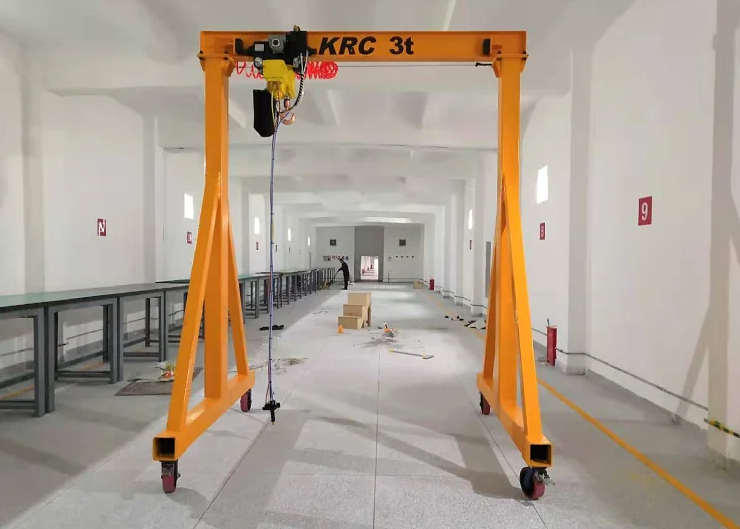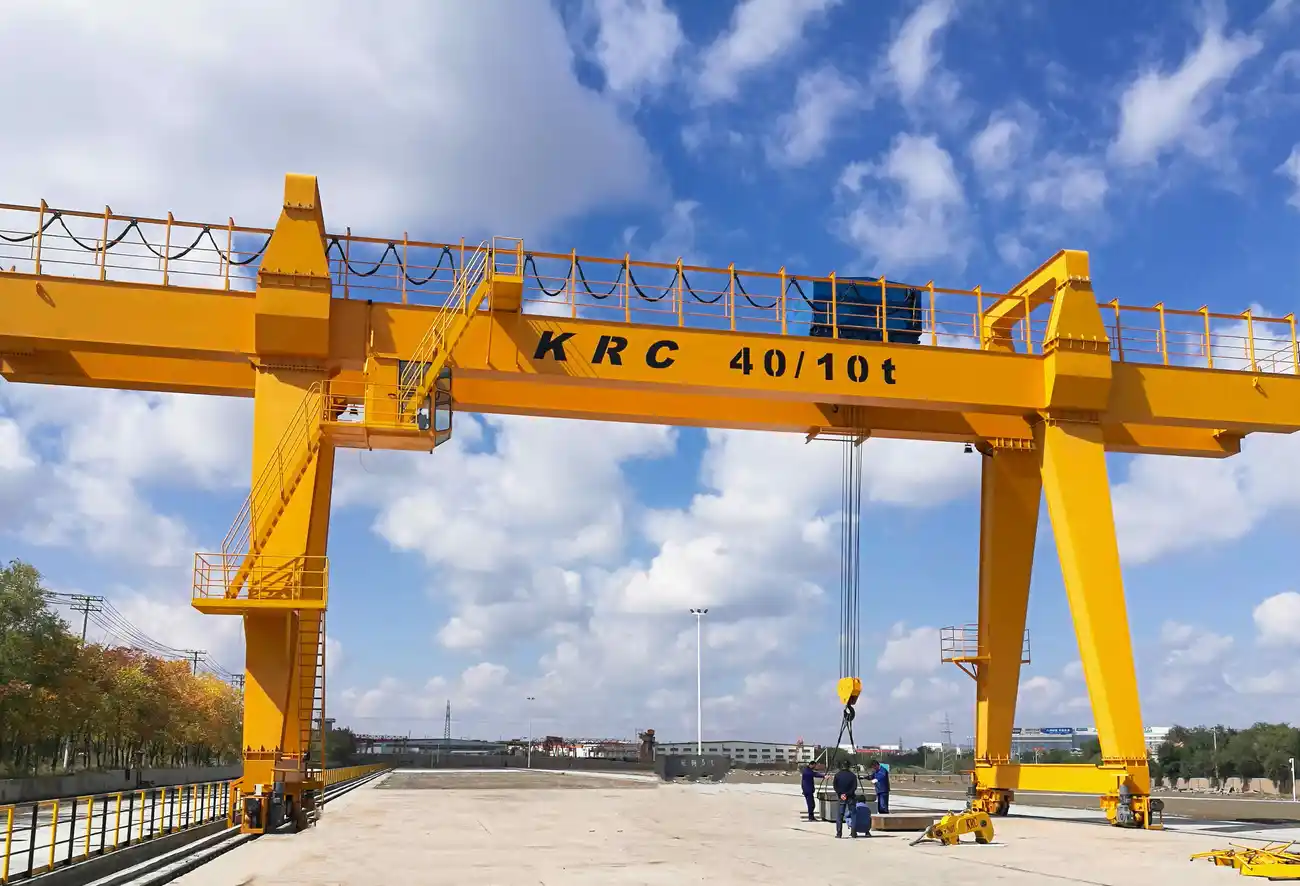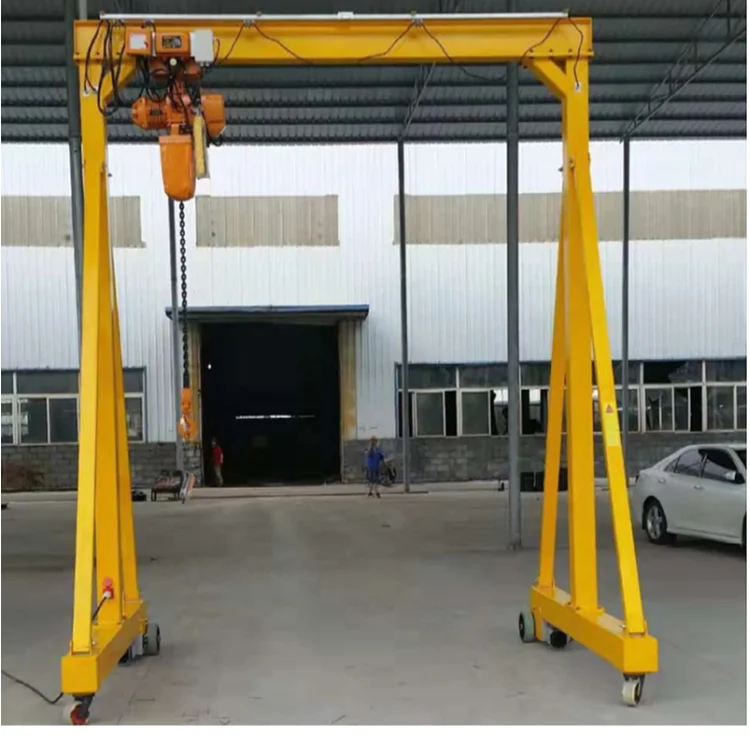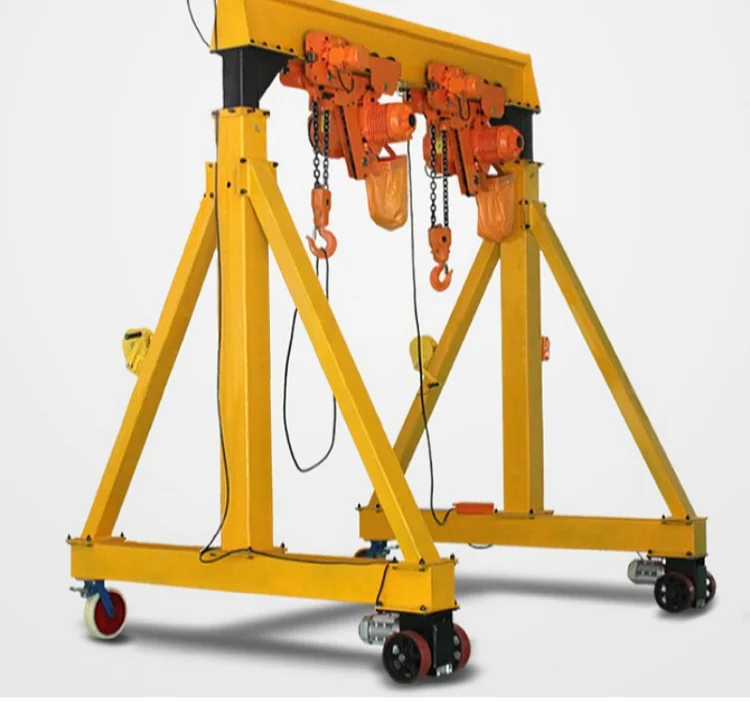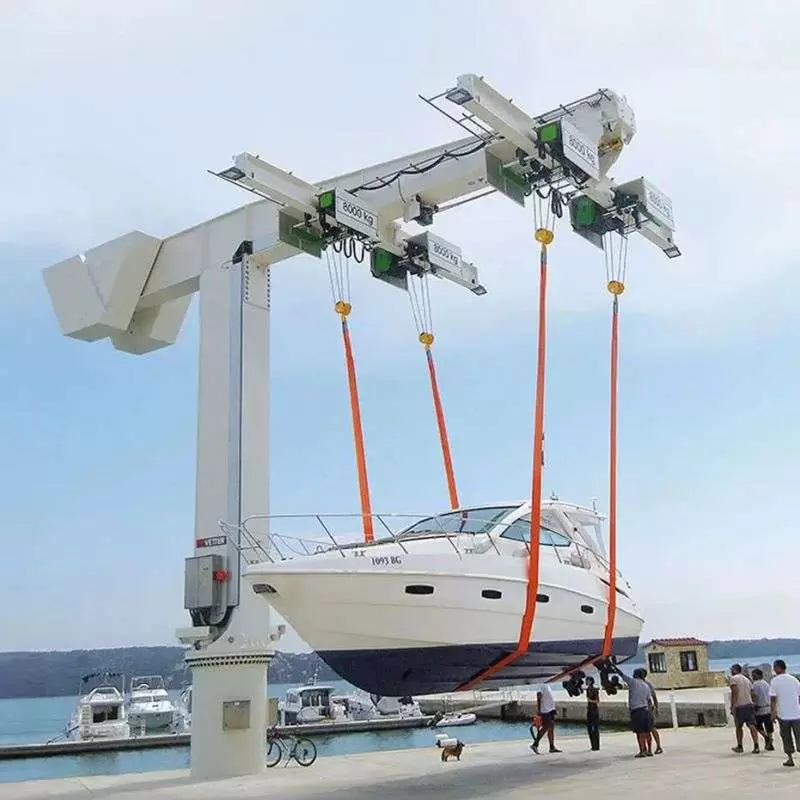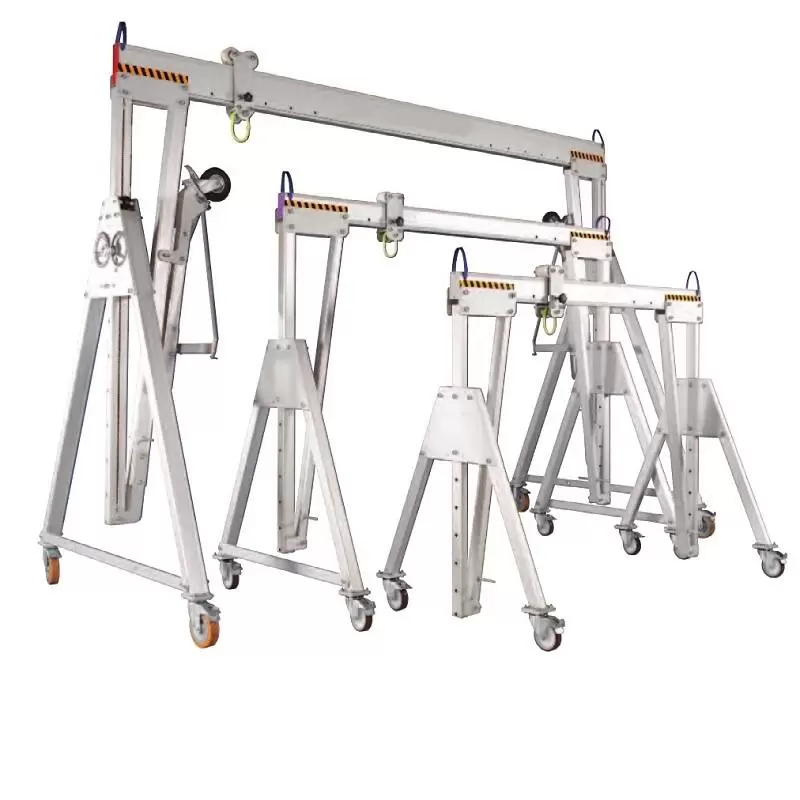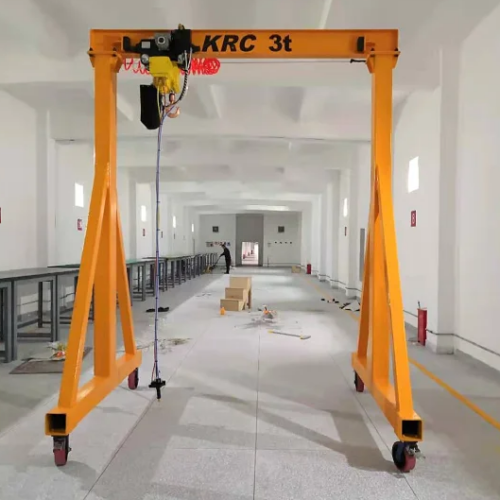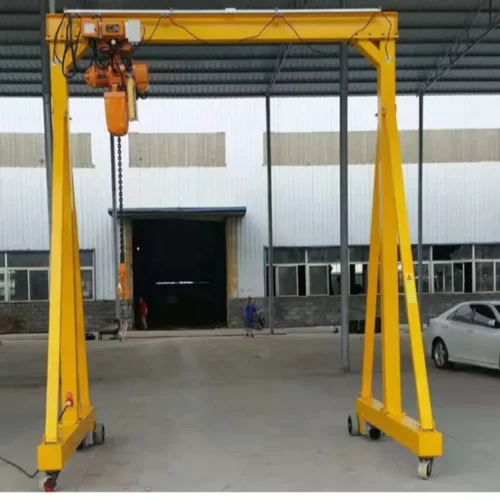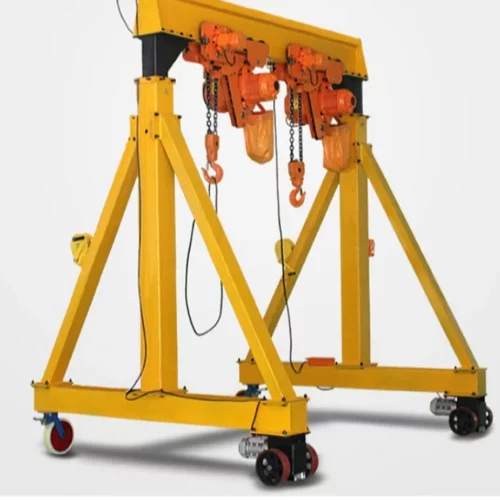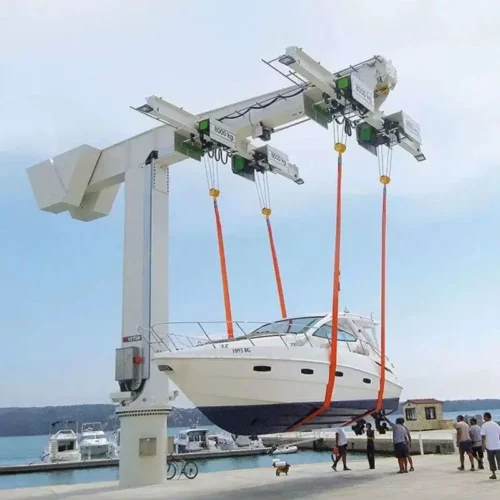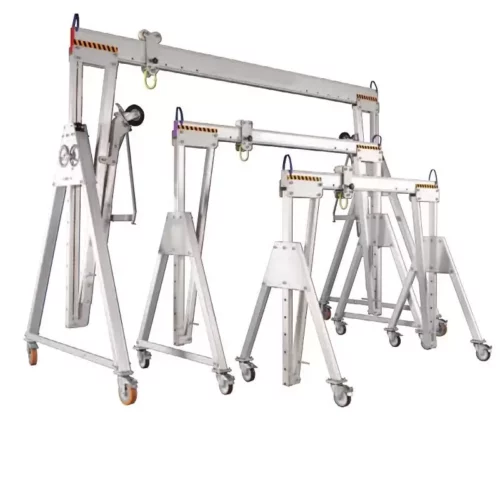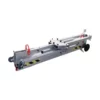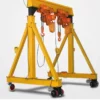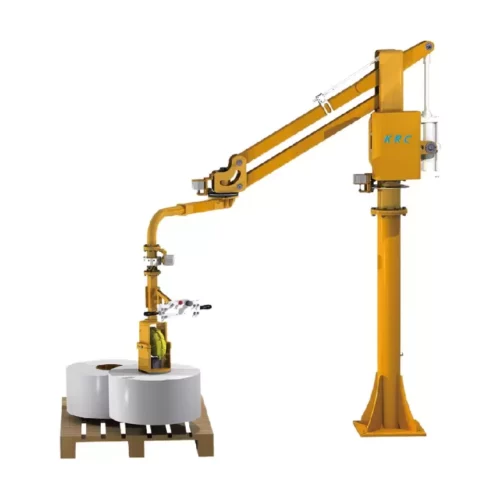rolling gantry crane Safety Certifications
Rolling gantry cranes are versatile lifting devices used in various industries, such as construction, manufacturing, and warehousing. To ensure their safe operation, several safety certifications and standards must be adhered to:
1. OSHA (Occupational Safety and Health Administration): OSHA sets forth regulations in the United States to ensure workplace safety. OSHA standard 29 CFR 1910.179 specifically deals with overhead and gantry cranes, outlining requirements for design, maintenance, inspections, and operation.
2. ANSI (American National Standards Institute): ANSI standard B30.2 provides safety standards for overhead and gantry cranes, covering construction, installation, inspection, testing, maintenance, and operation to ensure the cranes are safe for use.
3. ASME (American Society of Mechanical Engineers): ASME B30.2, similar to ANSI, details safety practices for the design, maintenance, and operation of overhead and gantry cranes, ensuring they meet rigorous safety benchmarks.
4. ISO (International Organization for Standardization): ISO 9927-1 provides guidelines for the safe use, maintenance, and inspection of cranes. Compliance with ISO standards indicates adherence to globally recognized safety practices.
5. CE Marking (Conformitè Europëenne): For cranes sold in the European Union, CE marking signifies compliance with the EU Machinery Directive (2006/42/EC), ensuring safety through risk assessments, safety features, and proper documentation.
6. CMAA (Crane Manufacturers Association of America): CMAA Specification No. 70 and No. 74 outline standards for the construction, installation, and safe operation of overhead and gantry cranes. These specifications are widely recognized within the industry.
7. FEM (Fédération Européenne de la Manutention): FEM 1.001 and related standards define guidelines for the safe design, construction, use, and maintenance of cranes within Europe, ensuring high safety levels.
Compliance with these certifications and standards serves to minimize risks associated with the operation of rolling gantry cranes, safeguarding operators and enhancing overall workplace safety.
List Reference Technical Parameters of “rolling gantry crane”
A rolling gantry crane, commonly used for material handling in various industries, has several technical parameters that define its performance and application suitability. Here are the key parameters:
1. Lifting Capacity
– Defines the maximum weight the crane can lift, typically ranging from a few tons to several hundred tons.
2. Span
– The horizontal distance between the parallel rails on which the crane runs, ranging from a few meters to over 30 meters.
3. Lifting Height
– The maximum vertical distance the hook or lifting mechanism can travel, varying from a few meters to over 50 meters.
4. Hook Approach
– The closest distance the hook can get to the side rails (cross travel), often specified in meters.
5. Travel Speed
– The speed at which the gantry travels along the rails, usually measured in meters per minute (m/min). This includes trolley travel speed and crane (gantry) travel speed.
6. Lifting Speed
– The vertical speed at which the lifting mechanism raises or lowers the load, measured in meters per minute (m/min).
7. Duty Class/Service Classification
– Defines the intensity of service the crane is designed for, often referred to by classifications such as A1-A8 (CMAA) or equivalent ISO and FEM classes.
8. Power Source
– Electrical specifications including voltage, phase, and frequency, typically 3-phase AC power with standard voltages like 380V, 400V, or 480V.
9. Control System
– Includes options like pendant control, wireless remote control, and cab control, affecting precision and operator convenience.
10. Wheel Load
– Maximum load exerted on the crane’s wheels, affecting runway design and structural support.
11. Clearance Dimensions
– Include end-clearance and height-clearance, crucial for spatial planning in facilities.
12. Operational Environment
– Specifications for indoors/outdoors use, temperature ranges, and environmental conditions like humidity, dust, and explosive atmospheres.
These parameters collectively ensure that a rolling gantry crane meets specific operational needs while adhering to safety and efficiency standards.
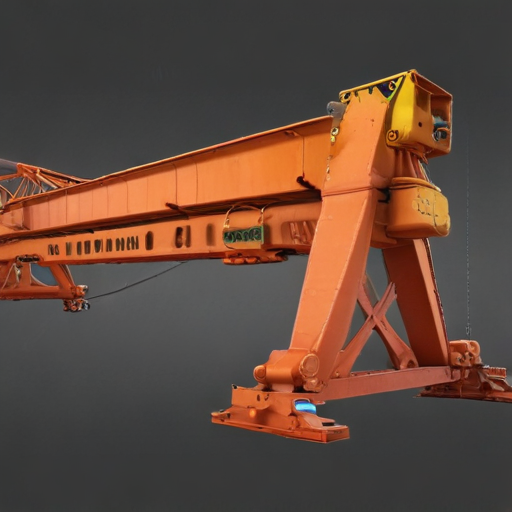
List Product features of “rolling gantry crane”
Sure, here are the key product features of a rolling gantry crane in under 300 words:
1. Mobility: Equipped with wheels or casters for easy movement, allowing it to traverse various areas within a facility or job site.
2. Adjustable Height: Many models come with height-adjustable legs, enabling custom height settings to accommodate different lifting requirements.
3. Load Capacity: Offered in various load capacities, typically ranging from 1 ton to 10 tons or more, to handle a variety of weights.
4. Span Length: Available in different span lengths to adapt to different workspace widths and operational demands.
5. Durability: Constructed with high-strength steel or aluminum, ensuring robust performance and long-term durability.
6. Ease of Assembly: Designed for quick and straightforward assembly and disassembly, facilitating transport and reconfiguration.
7. Versatility: Can be used for a range of applications including material handling, maintenance tasks, and assembly lines.
8. Stability and Safety: Often includes features such as locking casters and stabilizers to prevent unwanted movement and ensure safety during operation.
9. Ergonomic Design: User-friendly design aimed at reducing operator strain and improving efficiency during lifting tasks.
10. Customizable Options: Many manufacturers offer customization options such as different paint finishes, accessories like festoon systems, or motorized movement.
11. Compliance: Built to meet industry standards and safety regulations, ensuring reliable and safe operation.
12. Portability: Designed to be lightweight and portable for use in multiple locations without heavy machinery.
13. Power Options: Available in both manually operated and powered models, depending on the specific needs and environment.
14. Precision: Often features fine-tuned controls for precise positioning and movement of loads.
These features make the rolling gantry crane a versatile, efficient, and essential tool in various industrial and construction settings.
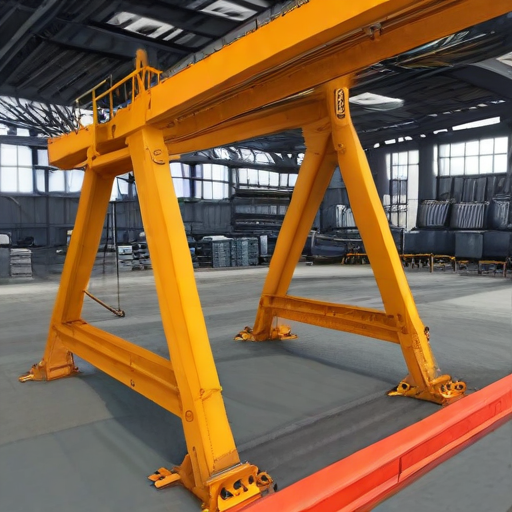
List Application of “rolling gantry crane”
A rolling gantry crane is a versatile lifting device employed across various industries to handle heavy loads and facilitate efficient material movement. Here are some key applications:
1. Manufacturing: In automotive, aerospace, and machinery manufacturing, rolling gantry cranes assist in assembling heavy components and moving parts between different production stages.
2. Construction: They are used on construction sites to lift and transport building materials like steel beams, concrete panels, and other hefty components, aiding in the erection of structures.
3. Warehousing and Logistics: Rolling gantry cranes help in the efficient loading, unloading, and organization of goods in warehouses, ensuring smooth storage and retrieval processes.
4. Shipbuilding and Repair: These cranes facilitate the handling of large ship parts, such as hull sections and engines, enabling precise assembly and repair of vessels.
5. Railway Maintenance: Rolling gantry cranes are employed in railway depots to lift and maneuver train components, assisting in maintenance and repair tasks.
6. Mining: In mining operations, they are used to handle heavy machinery parts, ores, and other materials, ensuring smooth operational workflows.
7. Utility Services: For utility companies, rolling gantry cranes assist in the installation and maintenance of heavy infrastructure components like transformers and large pipes.
8. Aviation: In airports and aviation maintenance areas, they are crucial for lifting and positioning aircraft parts and ground service equipment.
9. Metal Fabrication: Gantry cranes facilitate the movement of metal sheets, beams, and other components, enabling efficient fabrication and assembly processes.
10. Port Operations: They aid in container handling and cargo management, contributing to efficient port operations and quicker turnaround times for ships.
Overall, the adaptability and mobility of rolling gantry cranes make them indispensable across a variety of industries, enhancing productivity, safety, and operational efficiency.
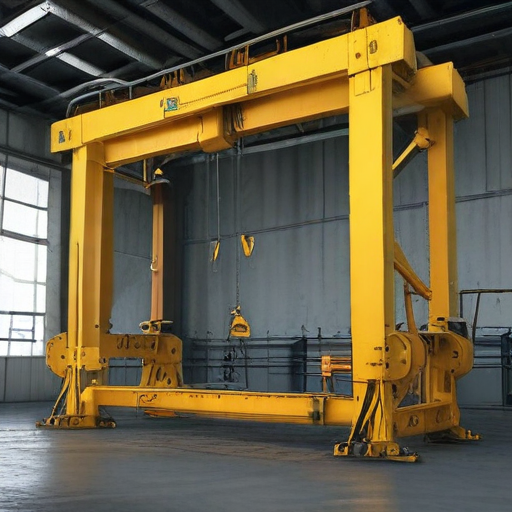
List Various Types of “rolling gantry crane”
Rolling gantry cranes, integral in material handling and construction settings, come in various types to suit different applications. Below is a brief overview of several types:
1. Single Girder Rolling Gantry Cranes: Featuring a single beam or girder, these cranes are generally lightweight and ideal for smaller lifting requirements. They are cost-effective options for warehouses or workshops with limited space and lower capacity needs.
2. Double Girder Rolling Gantry Cranes: These cranes have two girders, providing additional strength and stability for lifting heavier loads. They often support higher capacities and longer spans, making them suitable for larger industrial settings or construction sites.
3. Adjustable Height Gantry Cranes: Equipped with adjustable height features, these cranes offer flexibility in various lifting applications. They are particularly useful in environments where lifting requirements change frequently or where space constraints necessitate adaptable solutions.
4. Portable Gantry Cranes: Designed for mobility, these cranes can be easily moved around a facility. They are typically lightweight, equipped with wheels or casters, and are suitable for tasks requiring maneuverability.
5. Rail-Mounted Gantry Cranes (RMG): Common in shipping yards and container terminals, these cranes travel on rails and are used for handling heavy and cumbersome items such as containers. They offer stability over long distances.
6. Rubber-Tired Gantry Cranes (RTG): These cranes are similar to RMG but are mounted on rubber tires instead of rails, providing flexibility and mobility within a confined area like a port or storage yard.
7. Semi-Gantry Cranes: These cranes have one leg running on a rail while the other side is supported by a runway system or an existing building structure. They are suitable for environments where space utilization on one side is critical.
8. Workstation Gantry Cranes: Specifically designed for light-duty applications, they are often used in assembly lines, manufacturing, or small workshops.
Each type comes with its unique features tailored to specific lifting environments and requirements, enhancing efficiency and operational suitability.
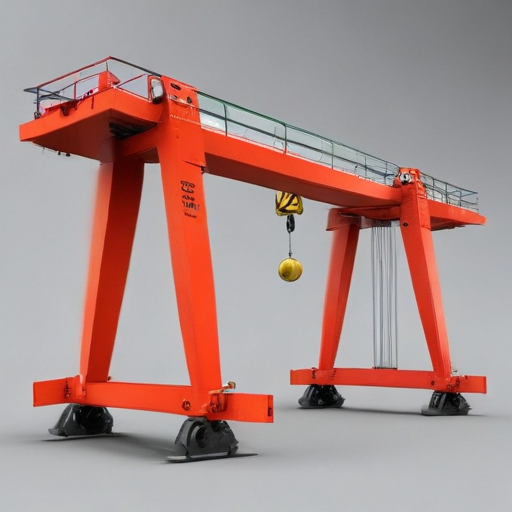
rolling gantry crane Accessories Upgrades and Custom Manufacturing Options
When considering accessories, upgrades, and custom manufacturing options for a rolling gantry crane, the focus is on enhancing efficiency, safety, and functionality to meet specific operational needs.
Accessories:
1. Lifting Attachments: Specialized hooks, tongs, and magnets for diverse load types.
2. Safety Devices: Load limiters, anti-collision sensors, and emergency stop buttons.
3. Control Systems: Radio remote controls, pendant controls, and automated systems for precision.
4. Lighting: LED load lights to improve visibility in low-light conditions.
5. Wheels and Casters: Options like rubber, steel, and pneumatic tires for various floor types.
6. Load Indicators: Digital readouts to monitor weight and enhance safety.
Upgrades:
1. Motorized Travel: Conversion kits to switch from manual to motorized gantry movement.
2. Height Adjustability: Mechanisms for easy adjustment of the crane’s height.
3. Weatherproofing: Coatings and enclosures to protect against outdoor elements.
4. Increased Load Capacity: Reinforcements to handle higher weight limits.
5. Electrification Kits: Power feed systems for seamless electrical integration.
Custom Manufacturing Options:
1. Tailored Dimensions: Customizable span, height, and clearance to fit specific spaces.
2. Material Selection: Steel, aluminum, or hybrid models for different strength and weight requirements.
3. Special Finishes: Galvanized or powder-coated finishes for corrosion resistance.
4. Design Modifications: Unique structural designs for unusual lifting scenarios or workspaces.
5. Integration Capabilities: Compatibility with existing systems and machinery for cohesive operations.
These enhancements ensure that the rolling gantry crane operates optimally within the unique parameters of your facility or project, ultimately contributing to improved productivity and safety.
List Quality Control and The Manufacturing Process of “rolling gantry crane”
Quality Control in Rolling Gantry Crane Manufacturing
1. Material Inspection: Raw materials, such as steel, are inspected for compliance with specifications using methods like X-ray fluorescence (XRF) for composition and tensile tests for strength.
2. Dimensional Verification: Precision tools like calipers and micrometers measure components to ensure they meet design specs. 3D laser scanning may be used for comprehensive checks.
3. Welding Quality Checks: Non-destructive testing (NDT) methods such as ultrasonic testing (UT), radiographic testing (RT), and magnetic particle inspection (MPI) are employed to ensure weld integrity.
4. Load Testing: Prototypes and finished cranes undergo load testing, typically involving weights that exceed the crane’s rated capacity, to ensure structural and mechanical reliability.
5. Operational Testing: Functional tests verify the performance of the crane’s mechanical and electrical systems, including hoisting, travel mechanisms, and safety features.
6. Compliance Verification: Ensuring all manufacturing adheres to ISO 9001 and other relevant industry standards.
Manufacturing Process of Rolling Gantry Crane
1. Design and Engineering: Detailed CAD drawings and simulations are created, taking into account load capacities, environmental conditions, and safety requirements.
2. Material Cutting: High-precision CNC machines and laser cutters shape components from raw materials.
3. Forming and Machining: Components like beams and frames are formed using bending and rolling machines. Key parts are machined to precise tolerances.
4. Welding and Assembly: Skilled welders join components into sub-assemblies. Robotic welding ensures consistency and high quality.
5. Painting and Surface Treatment: Components are treated to prevent corrosion, often with a combination of sandblasting, priming, and painting.
6. Final Assembly: Major components like the wheels, control systems, and hoisting mechanisms are integrated. Electrical wiring and control systems are installed.
7. Testing and Validation: Load tests, operational tests, and safety checks are conducted to validate performance against design expectations.
8. Packaging and Delivery: Finished cranes are securely packaged and transported to the customer, including documentation for installation and operation.
Through these meticulous quality control and manufacturing steps, a rolling gantry crane is ensured to be both reliable and durable, meeting both safety and performance standards.
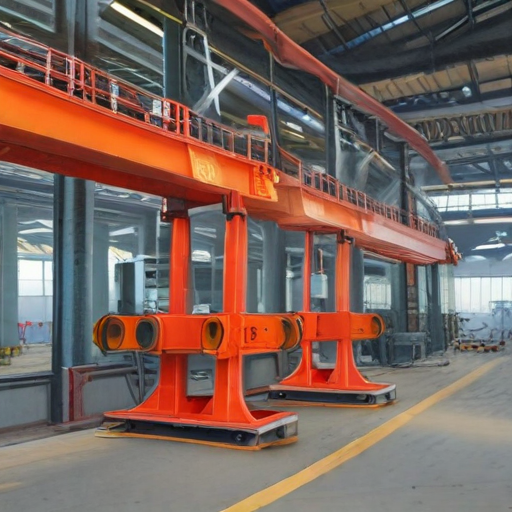
How to use “rolling gantry crane”
A rolling gantry crane is a versatile lifting device widely used in industrial settings for moving heavy loads. Here’s a concise guide on how to use it:
1. Pre-Operation Inspection:
– Check the Crane: Ensure the crane is in good working order. Inspect the wheels, beam, hoist, and safety features for any damage or wear.
– Load Capacity: Verify the maximum load capacity of the crane and ensure it’s adequate for the task.
2. Setup:
– Position the Crane: Roll the gantry crane to the required location. Ensure the surface is even and stable to prevent tipping.
– Secure the Crane: Engage the wheel locks or stabilizing legs to secure the crane in place.
3. Hoisting the Load:
– Attach the Load: Connect the load securely to the hoist or lifting mechanism using appropriate lifting gear like slings, chains, or hooks. Ensure the load is balanced and securely fastened.
– Lift Slowly: Use the controls to lift the load slowly, maintaining constant observation to ensure stability and safety.
4. Moving the Load:
– Controlled Movement: Once lifted, move the crane along its tracks gently. Avoid sudden movements to maintain load stability.
– Monitor Clearance: Ensure the load has adequate clearance from obstacles, workers, and other equipment.
5. Lowering the Load:
– Position Correctly: Move the crane to the desired location and carefully lower the load.
– Unload Safely: Detach the lifting gear safely and inspect the load to ensure it is securely positioned.
6. Post-Operation:
– Check Equipment: After use, inspect the crane for any signs of wear or damage.
– Secure Storage: Store the crane in a designated location, ensuring any movable parts are locked or secured.
Safety Tips:
– Always follow the manufacturer’s guidelines and safety protocols.
– Never exceed the crane’s load capacity.
– Ensure only trained personnel operate the crane.
By adhering to these steps, you can safely and effectively use a rolling gantry crane for various lifting tasks.
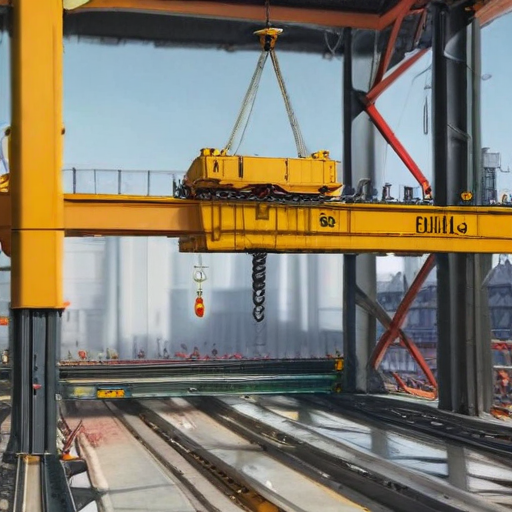
“rolling gantry crane” Comparative Analysis
A rolling gantry crane, also known as a mobile gantry crane, is a versatile piece of equipment used in various industries to lift and move heavy loads. When comparing rolling gantry cranes to other types of cranes, several factors stand out:
1. Mobility: Unlike stationary overhead cranes, rolling gantry cranes are designed to move along a track or wheels, providing flexibility in positioning within the workspace. This mobility makes them ideal for temporary job sites, maintenance tasks, and areas with changing layouts.
2. Capacity and Range: Rolling gantry cranes typically have a lower load capacity compared to heavy-duty bridge cranes or tower cranes. They are best suited for medium-duty tasks, often handling loads up to several tons. For very heavy lifting requirements, stationary cranes may be more appropriate.
3. Setup and Installation: Rolling gantry cranes generally require minimal installation time and infrastructure. They can be quickly assembled and disassembled, making them advantageous for projects requiring swift setup. In contrast, stationary cranes involve significant installation time and structural modifications.
4. Cost: In terms of cost, rolling gantry cranes are generally more economical than their stationary counterparts. Their lower cost and ease of relocation can lead to cost savings on multiple projects or in dynamic work environments.
5. Space and Layout: For operations in confined or indoor spaces, rolling gantry cranes offer significant advantages. They do not require permanent supports or extensive overhead space, which makes them suitable for warehouses, fabrication shops, and maintenance areas.
6. Versatility: Rolling gantry cranes provide a high degree of versatility. They can be used in various industries, including construction, manufacturing, shipping, and logistics, for a wide range of lifting tasks. However, for precise and high-altitude lifting, tower cranes are more suitable.
In conclusion, rolling gantry cranes offer mobility, cost-effectiveness, and quick setup, making them valuable in various medium-duty lifting applications. However, for heavy lifting, high-altitude operations, or fixed locations, stationary cranes may be more suitable. Understanding the specific needs of your project will help determine the best crane type.
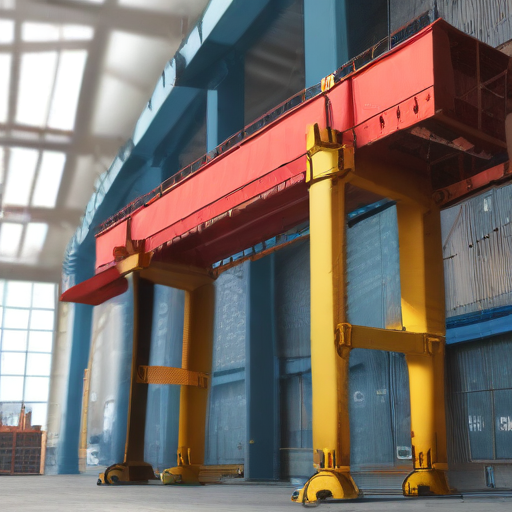
“rolling gantry crane” Warranty and Support
Rolling Gantry Crane: Warranty and Support
Warranty:
Our rolling gantry cranes come with a comprehensive warranty to ensure your investment is protected. We offer a standard 2-year warranty on all structural components, covering any defects in materials and workmanship under normal use and conditions. Additionally, a 1-year warranty is provided for electrical components and other wearable parts. This warranty ensures that any faulty parts are repaired or replaced without any cost to you, provided the equipment has been used and maintained according to our guidelines.
Support:
We pride ourselves on offering exceptional support services to our customers. Our dedicated technical support team is available 24/7 to address any issues or concerns you may have. We provide:
– Phone Support: Reach our experts directly via our support hotline for immediate assistance.
– Online Resources: Access our extensive library of manuals, troubleshooting guides, and instructional videos through our user-friendly website.
– On-Site Service: For issues that require hands-on attention, our team of certified technicians can be dispatched to your location to perform repairs or maintenance.
Preventive Maintenance Program:
To minimize downtime and maximize the lifespan of your rolling gantry crane, we offer an optional preventive maintenance program. This includes regular inspections, adjustments, and replacements of critical components, ensuring optimal performance and safety.
Training and Consultation:
We also provide comprehensive operator training sessions and safety workshops to help your team efficiently and safely use the crane. Our experts are available for consultations to tailor solutions specific to your operational needs and environment.
Our commitment to warranty and support ensures that your rolling gantry crane remains reliable and operational, so you can focus on your core activities without interruption.
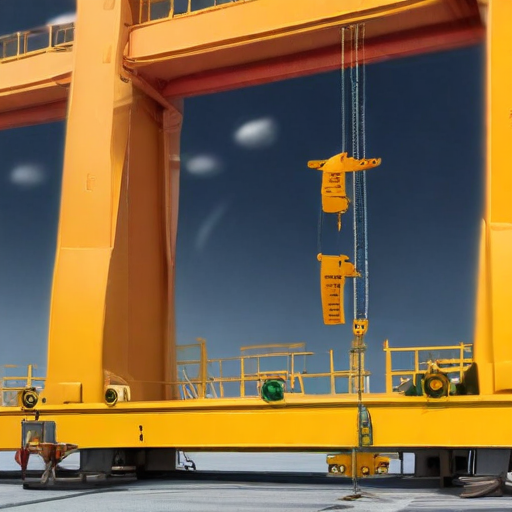
List “rolling gantry crane” FAQ
Rolling Gantry Crane FAQ
1. What is a Rolling Gantry Crane?
A rolling gantry crane is a type of overhead lifting equipment that features a movable frame supported by wheels or tracks, allowing it to travel horizontally. It is commonly used in warehouses, manufacturing facilities, and construction sites.
2. What are the primary uses of a Rolling Gantry Crane?
These cranes are ideal for lifting and transporting heavy materials over short distances. They are extensively used in industries such as manufacturing, shipping, and automotive.
3. How does a Rolling Gantry Crane work?
The crane consists of a horizontal beam (girder) supported by legs with wheels attached. The hoist, which lifts materials, moves along the girder while the entire framework can travel along the ground or a track system.
4. What are the weight capacities available?
Rolling gantry cranes come in various weight capacities, typically ranging from 1 ton to over 10 tons. The specific capacity needed will depend on the application.
5. Are Rolling Gantry Cranes customizable?
Yes, they can be customized in terms of height, width, and length to suit specific operational requirements. Optional features like motorization and specialized lifting attachments can also be added.
6. What materials are used to construct these cranes?
Most rolling gantry cranes are made from steel or aluminum. Steel offers greater strength and durability, while aluminum models are lighter and easier to maneuver.
7. How portable are Rolling Gantry Cranes?
One of their key advantages is portability. Many models are designed to be easily disassembled and reassembled, making them convenient for various job sites.
8. What safety features are included?
Standard safety features include overload protection, emergency stop buttons, and safety latches. Routine maintenance and inspection are crucial for safe operation.
9. What is the cost range for a Rolling Gantry Crane?
The cost can vary widely based on capacity, customization, and additional features. Basic models start at around $2,000, while more advanced setups can exceed $20,000.
10. How do you maintain a Rolling Gantry Crane?
Regular inspections, lubricating moving parts, and checking for wear and tear are essential. Always follow the manufacturer’s maintenance guidelines to ensure longevity and safety.
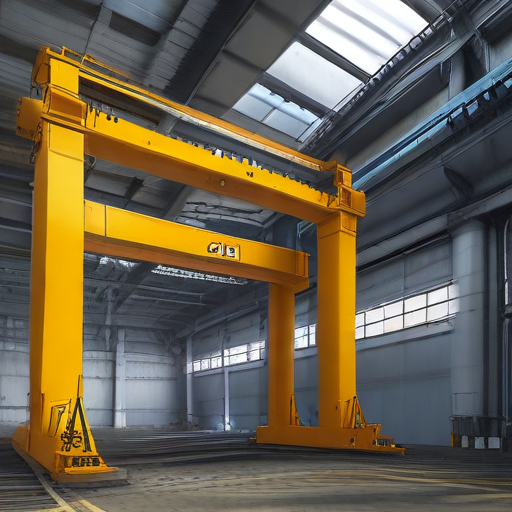
Top 10 FAQ with answer about rolling gantry crane for Buyer Sourcing from China
Certainly! Here are the top 10 frequently asked questions (FAQ) about sourcing a rolling gantry crane from China, along with concise answers:
1. What is a rolling gantry crane?
– Answer: A rolling gantry crane is a mobile crane system with a gantry structure that moves on wheels, allowing it to transport heavy loads within a workspace.
2. What are the main types of rolling gantry cranes available?
– Answer: The main types include adjustable-height gantry cranes, fixed-height gantry cranes, and motorized gantry cranes.
3. What is the typical lead time for delivery from China?
– Answer: The lead time can vary but generally ranges from 30 to 60 days, including manufacturing and shipping time.
4. How can I assess the quality of Chinese-made gantry cranes?
– Answer: Look for certifications such as ISO, CE, and CCC. Additionally, request test reports, customer references, and conduct factory audits if possible.
5. What is the average cost of a rolling gantry crane from China?
– Answer: Costs vary based on specifications and capacities but generally range from $3,000 to $50,000. Custom specifications can impact pricing.
6. What are the minimum order quantities (MOQ)?
– Answer: Many manufacturers offer flexibility with MOQ, ranging from a single crane to bulk orders, depending on the company’s policies.
7. What are the warranty terms offered by Chinese suppliers?
– Answer: Typical warranties range from one to two years. It’s crucial to confirm the warranty period and coverage details before purchase.
8. Can I get customization for my specific requirements?
– Answer: Yes, most Chinese manufacturers offer customization options to meet specific load capacities, dimensions, and other special requirements.
9. What are the payment terms for sourcing from China?
– Answer: Common payment terms include a 30% deposit upfront with the balance paid before shipment. Letter of Credit (L/C) options are also available.
10. How do I handle transportation and logistics?
– Answer: Manufacturers can assist with export processes, and it’s advisable to use a reliable freight forwarder to manage shipping, customs clearance, and delivery to your location.
This concise guide should help buyers make informed decisions when sourcing rolling gantry cranes from China.

